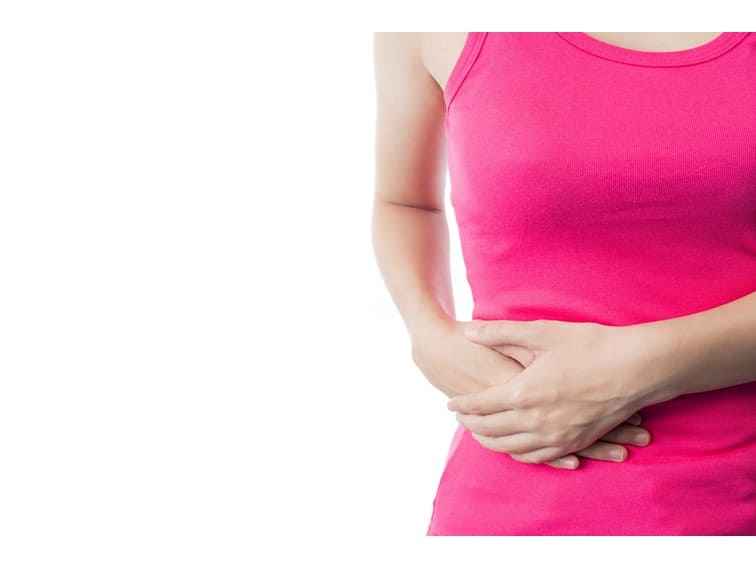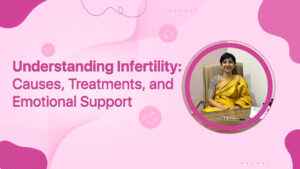Causes of Pelvic pain in women | Dr Rajeshwari Reddy T
Pelvic pain can be due to many health issues. In women pelvic pain is common and it could be due to many gynaecological conditions. If you have pain below your belly button and above your legs, it counts as pelvic pain.
Menstrual Cramps and PMS
You feel PMS pain in the lower abdomen and back. It may usually last for two to three days. The pain usually begins before periods and may continue for a few days during the period. Learn more about “PMS and menstrual cramps”
Some conditions with pelvic pain:
Uterine Fibroids
Uterine fibroids are benign growths (non-cancerous) on or in the wall of the uterus. These are commonly found in women between the age group of 30 to 45 years. Fibroids usually don’t cause problems. Your gynaecologist may decide whether you need treatment for your fibroids or to remove them – especially when they become troublesome. Trouble getting pregnant, heavy periods, lower back pain and pressure and pain in the pelvic region are some of the common symptoms.
IBS (irritable bowel syndrome)
IBS is also known as spastic colon. This is a condition which is often associated with constipation and pain that keeps on coming back. In addition, you may also have diarrhoea, bloating, cramps and abdominal pain. Medication, stress management and dietary changes can help manage this condition.
Ectopic Pregnancy
When an embryo implants outside the uterus and grows, ectopic pregnancy results. It occurs in the fallopian tubes. The symptoms of ectopic pregnancy include dizziness, nausea, vomiting, vaginal bleeding, abdominal cramps or pelvic pain. It is a medical emergency that requires immediate medical help.
Appendicitis
Many of us are well aware of this very common condition. The pain due to appendicitis is sharp in the right lower region of your abdomen. Doctors recommend surgery to address an infected appendix. If it bursts, the infection may spread causing complications.
Painful Ovulation (Mittelschmerz)
Some women feel pain midway between periods. Mittelschmerz is a German term for “middle” and “Pain”. It is named so because it occurs midway through your menstrual cycle. The pain is not troublesome as it may go away within a few hours.
Endometriosis
It is a condition wherein the tissue that lines the uterus or which is similar to the tissue present in the uterus grows outside the uterus. The tissue can grow on fallopian tubes, ovaries, bladder, intestines and other organs of the pelvic region. It may lead to the formation of scar tissue and pelvic pain. Women with endometriosis find it difficult to get pregnant. Learn more about endometriosis causes, symptoms and treatment types – and talk to your gynaecologist about which treatment would be best in your case.
Learn about “laparoscopic surgery – the gold standard treatment for endometriosis”
Urinary Tract Infection (UTI)
When bacteria get into the urinary tract through the urethra, they cause urinary tract infection. It is a common problem in women. It can sometimes become severe and cause severe complications and damage to the kidneys and bladder. Lower abdominal or pelvic pain is associated with UTI. The other symptoms include painful urination, an urge to urinate and abdominal pressure.
Learn more about “UTI”
Ovarian Cysts
Ovarian cysts may develop when a follicle fails to open and release the egg or when it closes and fills with fluid. Though a majority of the ovarian cysts go away on their own. If they persist, they may cause bloating, swelling, pressure and pelvic pain. Sometimes a cyst becomes large, twists or turns and then burst to cause a sudden shooting pelvic pain. A ruptured cyst is a medical emergency condition – which may require surgery. A routine gynaecological check-up involving a pelvic examination or abdominal ultrasound helps in spotting ovarian cysts.
Pelvic Inflammatory Disease (PID)
It is the infection of the pelvic organs in women – which is a result of sexually transmitted diseases. It is the most prominent (preventable) cause of infertility in women. Untreated PID can lead to permanent damage of fallopian tubes, ovaries, uterus and other pelvic organs. Painful urination or sex, abnormal vaginal discharge, fever, and pelvic pain are the symptoms of PID. It is mostly treated with antibiotics. Consult a gynaecologist as early as possible to prevent potential damage and complications.





